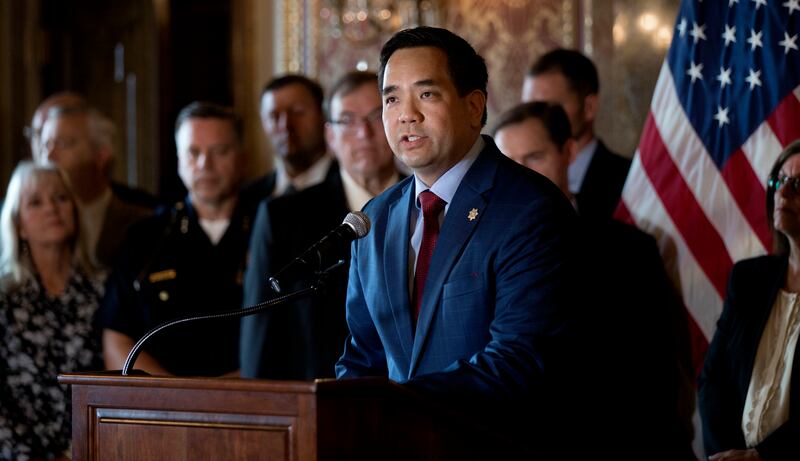Two days before Thanksgiving, Utah and the nation were focused on the coronavirus. It was the middle of a week that would end with a rolling seven-day average of 2,575 COVID-19 cases in the state with an average positive test rate of 21.4%.
On that day the governor and health officials continued to talk about the need not to gather different households around the Thanksgiving table. And for those who would come together, masks and social distancing were the order of the day.
Meanwhile on that Tuesday, a decision was announced in a federal court in New Jersey. Here’s how the New York Times reported it:
“Purdue Pharma pleaded guilty on Tuesday to criminal charges that it misled the federal government about sales of its blockbuster painkiller OxyContin, the prescription opioid that helped fuel a national addiction crisis.”
This crisis is ongoing and claiming thousands of lives. The coronavirus dominates the headlines as the yearlong pandemic pushes toward 2021 and the state, nation and world is hopeful that positive news about vaccines will bring change in the new year.
The opioid epidemic, however, is now more than a decade old, and Utah was front and center in prescribing and promoting OxyContin and the painkillers that so many with chronic pain sought.
In 1995, the FDA approved OxyContin, manufactured and distributed by Purdue Pharma. It claimed it was a medical breakthrough fighting pain with a claim that a controlled time-release of the narcotic would reduce the risk of addiction.
Between 1999 and 2010, pharmacy retail sales of opioid painkillers, obtained through doctor’s prescriptions, quadrupled. Deaths associated with those drugs also quadrupled. Since 1999, more than 450,000 people have died from opioid overdoses, according to the Centers for Disease Control.
Tuesday, more than 25 years from FDA approval, Purdue Pharma admitted to the following, as reported by the Times:
- Purdue’s chairman, Steve Miller, said that “in order to meet sales goals, the company told the Drug Enforcement Administration that it had created a program to prevent OxyContin from being sold on the black market, even though it was marketing the drug to more than 100 doctors suspected of illegally prescribing OxyContin.”
- The company “pleaded guilty to paying illegal kickbacks to doctors who prescribed OxyContin and to an electronic health records company, Practice Fusion,”
- The company’s guilty plea to criminal charges includes payment of criminal and civil penalties of $8.3 billion.
It is right that the country focus on COVID-19. During the past year, 265,973 have died in the United States from the virus, including 863 in Utah as of Saturday. But we can’t lose sight of the ongoing issues hurting so many, including the pain of addiction.
Here is more from the CDC, under the ominous heading of Overdose Death Maps.
“In 2018, an average of 41 people died each day from overdoses involving prescription opioids, totaling nearly 15,000 deaths. While prescription opioids were involved in 32% of all opioid overdose deaths in 2018, there was a 13.5% decrease in prescription opioid-involved death rates from 2017 to 2018.”
Also from the CDC website:
- Rates decreased in males and females, persons aged 15–64 years, non-Hispanic whites, Hispanics, non-Hispanic American Indian/Alaska Natives, and across all urbanization levels.
- Rates remained stable in the Northeast and decreased in the Midwest, South and the West.
- Seventeen states experienced declines in prescription opioid-involved death rates, with no states experiencing significant increases.
- The largest relative decrease occurred in Ohio (–40.5%), whereas, the largest absolute decrease occurred in West Virginia (–4.1 per 100,000) which also had the highest rate in 2018 (13.1 per 100,000).
The decreases are obviously good news. It came because of focus on Oxycontin, fentanyl and shining a light on the opioid epidemic and those who contributed to it. Coronavirus needs everyone’s attention. But hopefully there’s still room to battle the opioid crisis and other ills that afflict so many.


